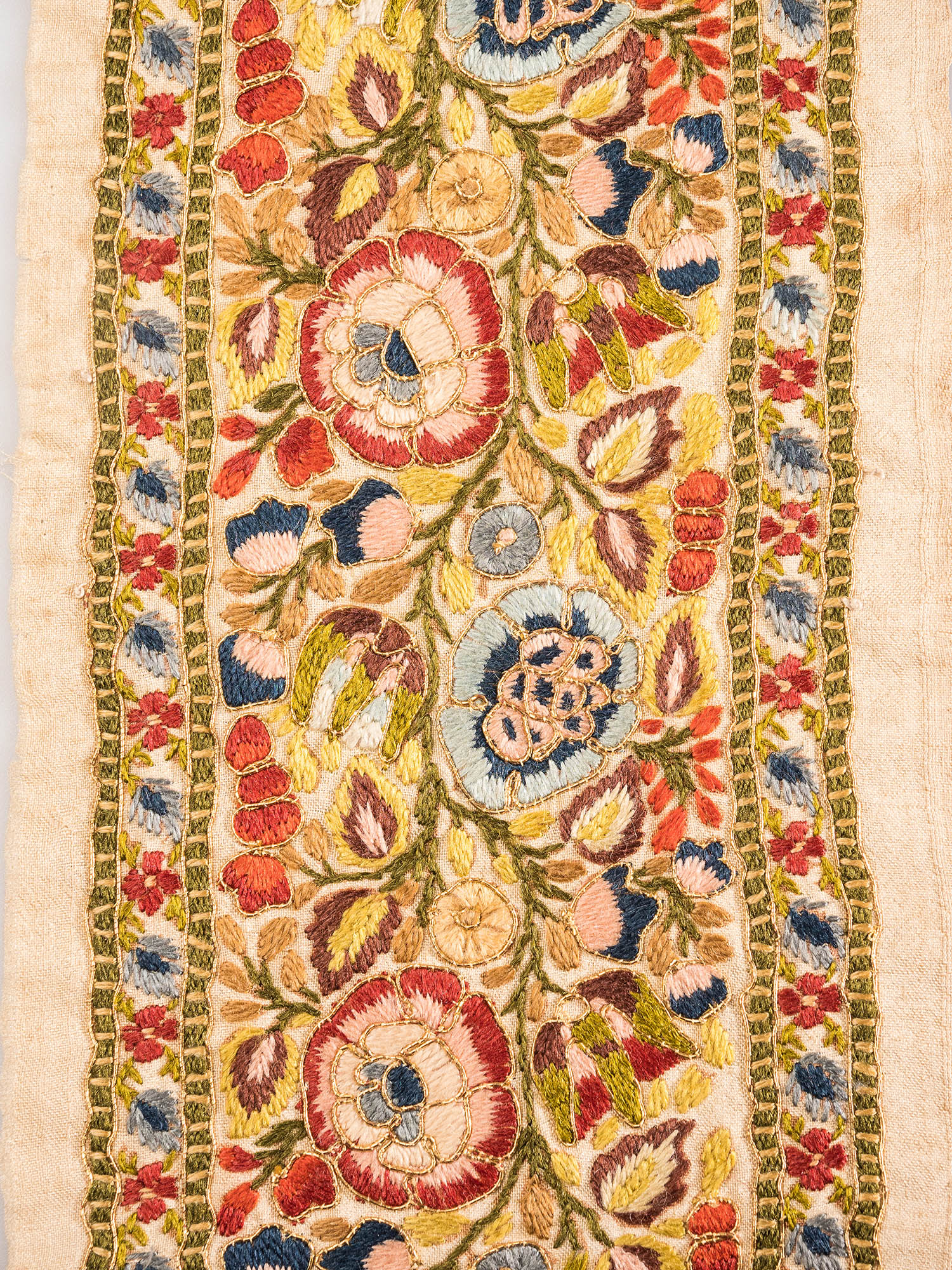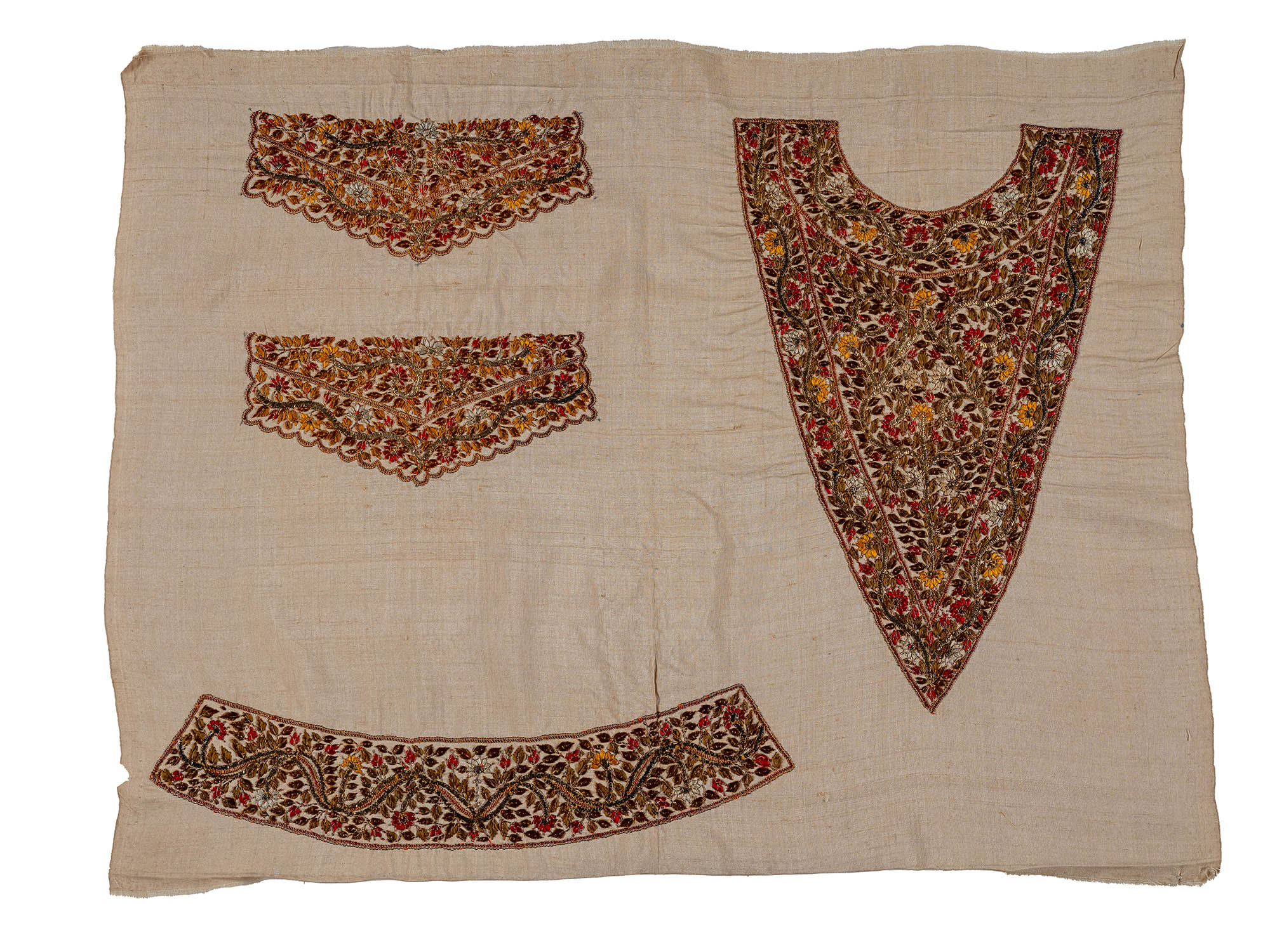#2 LEEK EMBROIDERY
Thomas Wardle was an influential silk dyer with a particular interest in Indian wild silks and natural dyes that influenced his experimentation with dyeing processes and materials: he worked with tussah silk produced from wild silk moths instead of the cultivated bombyx mori, domestic silk moth. Along with his wife Elizabeth, a talented embroiderer, he founded the Leek Embroidery Society in Staffordshire in 1879-80.
Wardle worked alongside several key members of the Arts & Crafts movement, including William Morris, and he developed a range of ‘Art Colours’ for Liberty, using natural dyes in opposition to the bright aniline dyes that were in fashion.
Oscar Wilde was a key proponent of Aesthetic Dress. At a lecture in 1884 he spoke of Thomas Wardle in Leek, saying, “in no town in England was a greater work being done in the cause of decorative art”.


